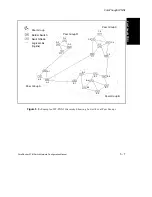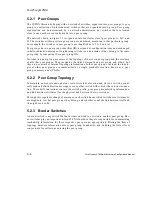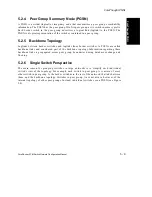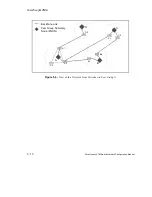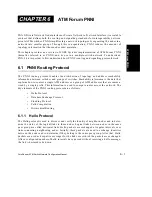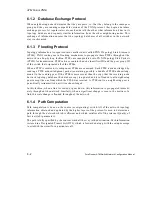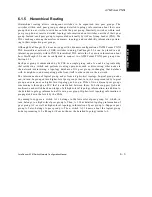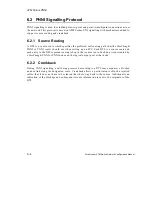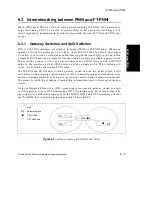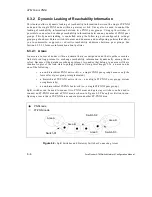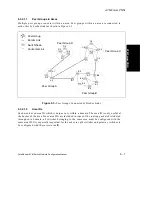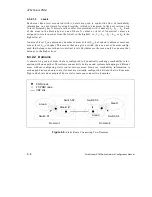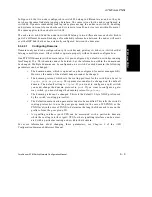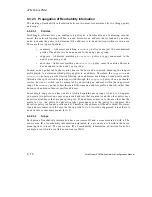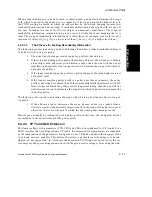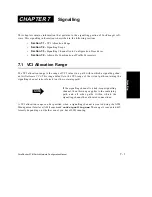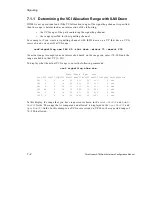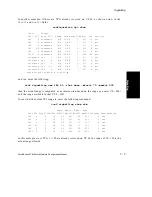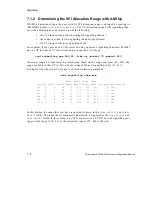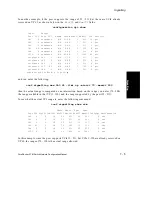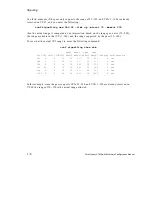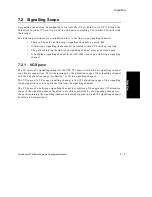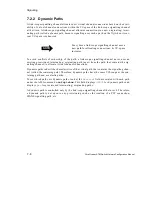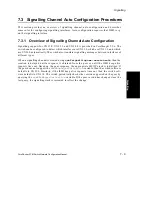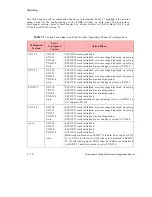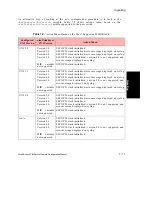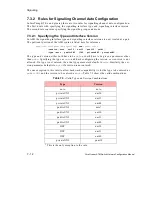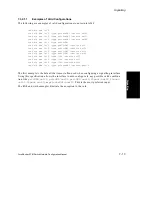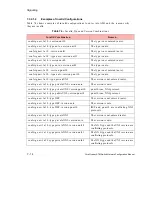
ForeRunner ATM Switch Network Configuration Manual
6 - 11
A
T
M F
o
rum
PNNI
ATM Forum PNNI
When a leaked address is to be advertised or summarized, a node also determines the scope
with which to advertise the address (or its summary). The scope denotes the highest level in
the PNNI routing hierarchy at which an address can be advertised. Scoping ensures that
reachability information does not loop. A reachable address being advertised with a scope of l
can only be leaked to areas of level lower (larger in numerical value) than l. The scope of
reachability information originated in a given area is 0 within that area, meaning that it is
local. The scope of reachability information advertised from, for example, area A1 (at level l
1
)
into area A2 (at level l
2
) is l
2
if l
2
is a lower level than l
1
, but is l
1
if l
2
is a higher level than l
1
.
6.3.2.3.3
The Process for Leaking Reachability Information
The following process is used by a node to determine if and how a leaked reachable address is
to be advertised to its peer group:
1.
The node finds the longest matching policy prefix for the address.
2.
If there is no matching policy prefix, the leaked address is advertised as is. If there
are multiple such addresses with different scopes, then the one with the widest
(smallest in numerical value) scope is used to determine the scope with which to
advertise the address.
3.
If the longest matching policy prefix is a policy suppress, the leaked address is not
advertised at all.
4.
If the longest matching policy prefix is a policy advertise or summary, the policy
prefix is advertised or summarized. If there are multiple leaked addresses with dif-
ferent scopes for which the policy prefix is longest matching, then the one with the
widest scope is used to determine the scope with which to advertise or summarize
the policy prefix.
The following rule is used to determine the scope with which to advertise an address or a pol-
icy prefix:
•
If the address used to determine the scope (chosen above) was leaked from a
strictly lower level (numerically larger) area, then the scope of the address is used;
otherwise, the level of the area to which the advertising node belongs is used.
Metrics can optionally be configured with a policy prefix. In this case, the configured metrics
are included in the advertisement of the policy prefix.
6.3.2.4 VP Trunk QoS Extension
This feature allows QoS parameters (CTD, CDV, and CLR) to be configured for VP trunks. For a
PNNI interface that is configured on a VP trunk, the associated QoS parameters are computed
as the combination of the parameters configured on the VP trunk and those that are part of the
switch and network modules. This feature also allows a particular service category to be con-
figured as “not supported,” in which case the associated PNNI link does not advertise the ser-
vice category, thus preventing connections with the given service category from using the link.
Summary of Contents for forerunner series
Page 6: ......
Page 16: ...TOC 10 ForeRunner ATM Switch Network Configuration Manual Table of Contents ...
Page 20: ...LOF 4 ForeRunner ATM Switch Network Configuration Manual List of Figures ...
Page 22: ...LOT 2 ForeRunner ATM Switch Network Configuration Manual List of Tables ...
Page 30: ...viii ForeRunner ATM Switch Network Configuration Manual Preface ...
Page 144: ...3 58 ForeRunner ATM Switch Network Configuration Manual Configuring an Emulated LAN ...
Page 180: ...6 12 ForeRunner ATM Switch Network Configuration Manual ATM Forum PNNI ...
Page 220: ...9 6 ForeRunner ATM Switch Network Configuration Manual Configuring Timing ...
Page 300: ...D 24 ForeRunner ATM Switch Network Configuration Manual Configuring FramePlus Modules ...
Page 308: ...Acronyms 8 ForeRunner ATM Switch Network Configuration Manual Acronyms ...
Page 346: ...Glossary 38 ForeRunner ATM Switch Network Configuration Manual Glossary ...
Page 352: ...Index 6 ForeRunner ATM Switch Network Configuration Manual Index ...

